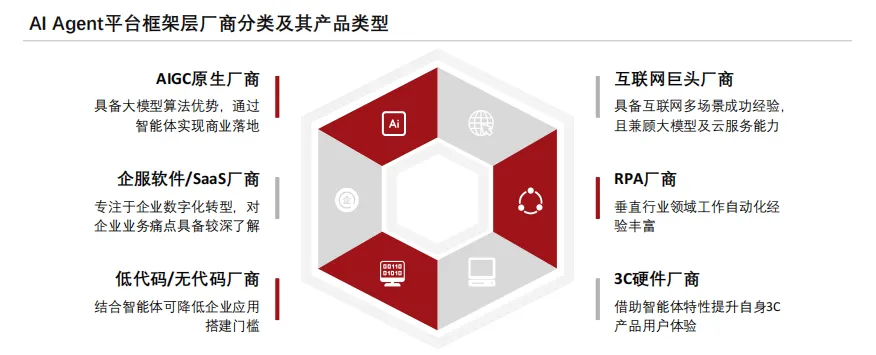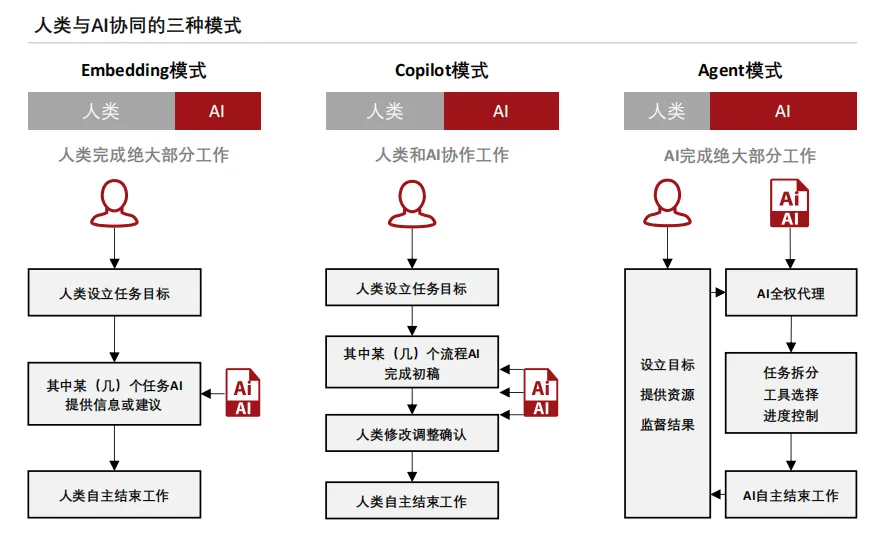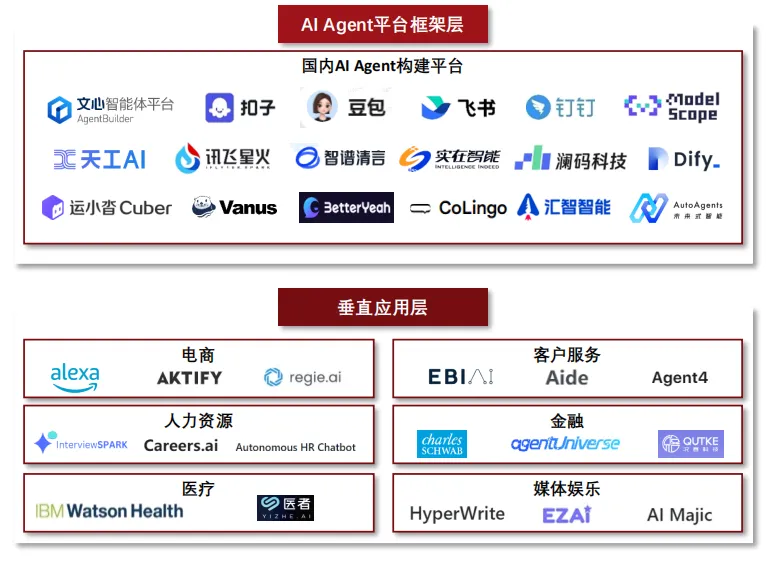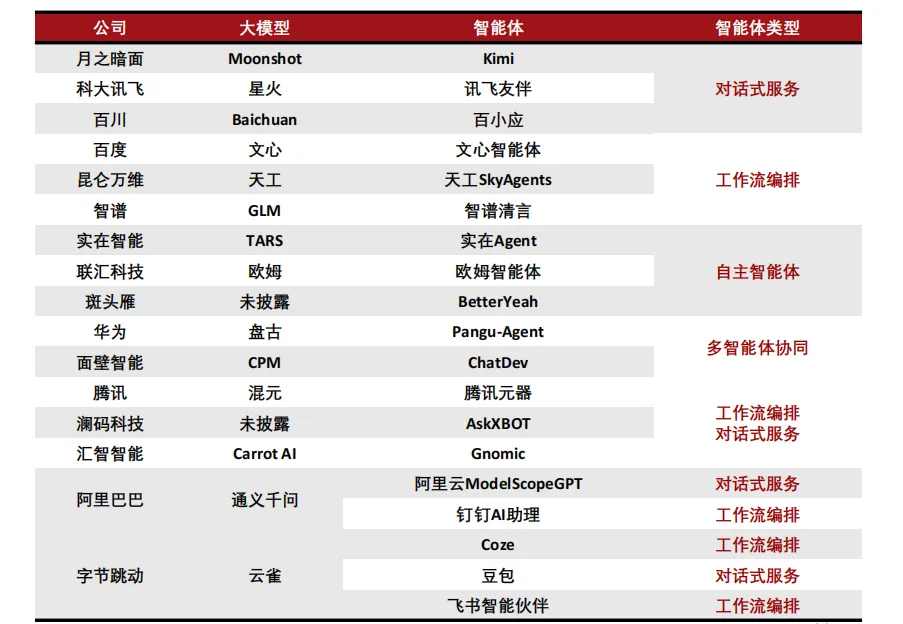
This article comes from research Collection of AI Agent in China in 2024"Research on China's AI Agent industry: intelligent agents have been implemented in a wide range of industries, leading a new engine of intelligent revolution.
AI Agent Industry Overview-Definition and infrastructure
AI Agent is an intelligent entity that can sense the environment, make decisions, and perform actions. Different from traditional artificial intelligence, AI Agent has the ability to gradually achieve a given goal through independent thinking and calling tools.. The difference between AI Agent and big model is that the interaction between big model and human is based on prompt. Whether the user prompt is clear or not will affect the response effect of big model. However, AI Agent only needs to give a goal, and it can think independently and take actions against the goal.
Download link:
research Collection of AI Agent in China in 2024
1. Research on China's AI Agent in 2024: innovation-driven, intelligent technology innovation
2. Research on Chinese AI Agent industry
key role of AI Agent in solving big model application problems
technical practice of AI Agent in enterprise production
AI Agent technology application collection
1. Thinking and sharing of AI Agent construction for Office Automation
2. Implementation of AI Agent in enterprise operation analysis scenarios
3. Experimental exploration of LLM and Multi-Agent in the field of operation and maintenance
research Report on AI Agent industry in 2024

an AI Agent system based on a large model can be divided into a set of LLM, Memory, Planning, and Tool. In the LLM-based AI Agent system, the big model is responsible for the calculation of the brain of the AIAgent system and needs other components to assist.
AI Agent Industry Overview-differences in man-machine collaboration models
the three modes of collaboration between human and AI include Embedding mode, Copilot mode and Agent mode. Compared with the first two modes, the Agent mode is more efficient, or it will become the main mode of human-computer collaboration in the future.

The Agent based on the big model can not only enable everyone to have exclusive intelligent assistants with enhanced capabilities, but also change the human-computer collaboration mode. It brings about a wider range of human-computer integration. The man-machine collaboration brought by generative AI will present three modes: Embedding mode, Copilot mode and Agent mode. Compared with embedded mode and co-pilot mode, the man-machine collaboration mode of intelligent body mode is more efficient, or it will become the main mode of man-machine collaboration in the future.
Overview of AI Agent industry-Characteristics and classification
the basic characteristics of AI Agent lie in its autonomy, interactivity, reactivity and adaptability. In terms of categories, AI Agent can be divided into Autonomous Agent and Generative Agent.

The basic characteristics of intelligent bodies lie in their autonomy, interactivity, reactivity and adaptability. These characteristics enable intelligent bodies to act independently in different environments and interact with other intelligent bodies or human beings, respond to external stimuli and adjust your own behavior according to experience. In terms of categories, agents can be divided into Autonomous agents and Generative agents.
Overview of AI Agent Industry-Market Scale
the global market size of autonomous intelligence is expected to increase from US $0.345 billion in 2019 to US $2.929 billion in 2024. In the future, a large number of agents will appear in the form of software assistants, and assistant products in the original software form will also be upgraded and iterated into autonomous Agent products.
Overview of AI Agent industry-industry ecological map


AI Agent Industry Overview-platform framework layer vendor types
the development of AI Agent in China is at an early stage. Different types of enterprises, such as AIGC native manufacturers, Internet giant manufacturers, enterprise service software/SaaS manufacturers, RPA manufacturers, low-Code/non-code vendors and 3C hardware vendors have entered the AI Agent market with their unique advantages in their fields.


AI Agent Industry Overview-business model of platform framework layer vendors
the business model of AI Agent includes software and services, Agent as a service, LLM as a service, Agent Store, consumer services, enterprise solutions, on-demand platforms, data and analysis, and technology licensing.
Overview of AI Agent industry-Development Trend
according to technical characteristics, the mainstream categories of AI agents in academia include Logic Agent, Task Agent, Job Agent and self-evolution Agent. At present, domestic and foreign products are mainly focused on Task Agent, and Job Agent will develop rapidly in the short term in the future.
The mainstream classification of AI Agent in academia includes: 1)Logic Agent, a kind of Agent that generates language and multimodal output again based on the understanding of input language and multimodal output; 2)Task Agent, oriented to specific tasks, decomposing plans to perform corresponding operations, and there is no Agent with long-term state memory in the process; 3)Job Agent, oriented to relatively abstract Job responsibilities and overall goals, perceiving the environment, memorizing the state of the process, the Agent that promotes the progress of work with the goal of self-generation.
Task Agent involves relatively few immature technologies, only one; Job Agent involves five immature technologies and one difficult item; the key technologies involved in self-evolution Agent are basically difficult. At present, the main AI Agent products at home and abroad are concentrated on Task Agent. The technologies involved in this kind of intelligent Agent are relatively mature and easy to replicate and popularize. The number of such intelligent agents will increase rapidly.
In the short term in the future, the development speed of Job Agent will accelerate and continue to develop towards self-progressive Agent with autonomous learning ability.
Source: architect Technology Alliance


 Reprint
Reprint 